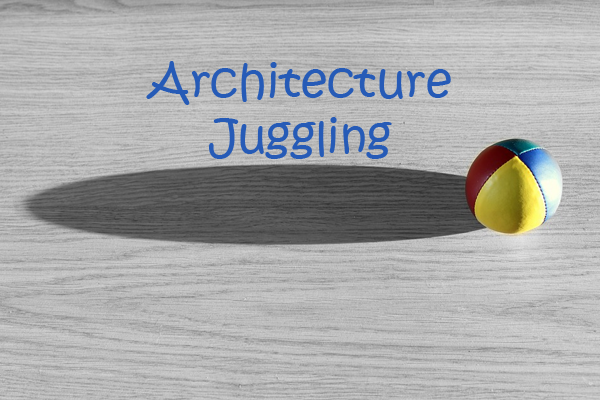In the architectural profession, it is important to learn how to juggle. I don’t mean that literally being able to juggle objects like in a circus, but about juggling tasks and deadlines.
It takes practice not only in time management but identifying “balls” to throw up in the air for a time being while handling other balls. At first during an internship or starting in an office you may be given fairly simple tasks that is only two or three theoretical balls to manage you time and deadlines. As you move through your career there will be more and more balls you will need to learn to juggle while managing your time.
When you move into construction there will be multiple things that will require you to manage your response timeliness such as: construction meetings, meeting minutes, requests for information, submittals, change orders, pay applications, and so on. There can be a lot to manage for a single project and possibly even multiple team members to handle the associated tasks. Sometimes the juggling that needs to be done is throwing particular balls up to keep there until more information is provided or while other balls are being handled.
This is not like the circus jugging. There is no gravity involved that you need to worry about but there are other factors like time management, deadlines, multiple projects, and project team. It’s more about know when you need grab different tasks that you put up in the air, or if something needs to be delegated to someone else to manage. It takes practice on being able to handle this architecture juggling and everyone has their own technique method that works best for them.
Another component of architecture juggling is learning to not spend too much time on something. There are too many tasks at one time to spend whole day tackling each of them. If an owner requests some options for a particular floor plan layout, provide them with a small handful (2-3) of options to choose from. You could spend an endless amount of time coming up with design options. If you spend days working on 30 options for a space what other deadlines is that effecting. And I hate to say it but odds are the owner will choose an option with some minor modifications they want to make to it anyway. It is rare for an owner(s) to simply pick one option you’ve design without any type of modification. This part of the juggling is about being able to dive in to a task, take the time you need but not too much, and move on to the ball in the air.
Be cautious of when you start throwing too many balls in the air to worry about later. If you start keeping too many balls for later, they may fall down to hit you in the head later. There isn’t gravity but there are deadlines, architectural fee restraints, and client expectations that can bring balls in the air down if you don’t grab them first. (Hence if you have heard the phase “dropping the ball” comes from) As you are juggling a few balls and able to get rid of some, start bringing down those floating balls. It’s that craft of time management that architect’s deal with on a daily basis. As a young professional, it is about practice, identifying what works for you, knowing when to ask for help/advice, and learning to challenge yourself along the way.
Written by Katelyn Rossier

